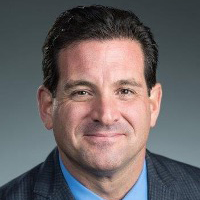Aligning Retirement Plans with Key Succession Goals
Many CPA firm owners are in their 50s and 60s, nearing the typical retirement horizon. Yet studies indicate that only about 41% of accounting firms have a formal succession plan in place. That means a majority haven’t fully mapped out who will take over the reins when they leave.
On the personal side, many small business owners (including CPAs) feel unprepared for retirement, nearly 6 in 10 aren’t sure how to maximize their retirement savings, and 42% worry they may never be able to retire comfortably. Frankly, these figures are striking, but they also highlight an opportunity: by integrating a structured retirement plan into your succession strategy, you can address both gaps at once.
In this two-part series, we’ll explore how thoughtful retirement planning can fortify your succession plan. We’ll look at aligning retirement tools with key continuity goals (like keeping your top talent, funding ownership transitions, and handling liquidity events), and we’ll walk through each phase of succession—preparation, transition, and post-transition—to see how retirement plans support every step of the journey.
Retaining Key Staff and Expertise
One of the greatest assets of your CPA firm is your team. When you retire or sell the practice, having experienced, loyal staff who stick around is invaluable for maintaining client confidence and operational continuity. Offering a solid retirement plan is a proven way to retain key employees. In today’s job market, employees weigh benefits like retirement savings heavily. In fact, data shows workers are on average 40% less likely to leave their job in the first year when they are offered a 401(k) or similar retirement plan. High employee turnover can be fatal during a succession; a retirement plan helps prevent that by boosting morale and loyalty.
A well-designed 401(k) or similar plan (e.g. a SIMPLE IRA or a SEP IRA) sends a message to your staff that you are investing in their future. For example, you might establish a 401(k) with employer matching or profit-sharing contributions. Employees then have a tangible financial incentive to stay, especially if there are vesting schedules that reward long-term tenure. By the time you’re preparing to step out, your staff is more likely to remain in place to support the new owner or lead the firm themselves. This continuity can be a selling point if you’re transferring to a partner or external buyer as clients and successors alike will appreciate that there’s an experienced team carrying on the work.
Retain Key Staff & Expertise with Smart Retirement Benefits
- ✓ 401(k) Match with vesting to reward tenure
- ✓ Profit-sharing that spotlights future leaders
- ✓ Cash Balance / Defined Benefit for “golden handcuffs”
- ✓ SIMPLE/SEP options for leaner teams
- ✓ SECURE 2.0 startup credits can offset costs
*General workforce stat for illustration only. Educational content, not advice. CPA Retirement Solutions is not a CPA or law firm.
Furthermore, if you identify a junior partner or key manager as a potential successor, a strong retirement benefits package can be part of grooming that person for leadership. For instance, you could use a profit-sharing contribution in the 401(k) plan that allocates a higher share to partners or executives (within IRS nondiscrimination limits), effectively giving your future leader extra skin in the game.
Even a defined benefit or cash balance plan can be structured to include key employees, providing them a significant future benefit that they forfeit if they leave the firm before a certain date. Such “golden handcuffs” can encourage them to stay through the transition. The bottom line is that offering retirement benefits is not just a perk; it’s a succession planning tool to help ensure your best people don’t jump ship precisely when you need them most.
(Recent legislation has even made it easier and cheaper for small firms to start retirement plans, with credits that can cover 100% of plan startup costs (up to $5,000 per year for three years). So even if cost was a concern, there are incentives now to help you establish a 401(k) or SEP for your team—an investment that can pay for itself by reducing costly turnover.)
Funding Buy-Sell Agreements and Ownership Transfers
Another critical aspect of succession is transferring ownership in a way that’s financially feasible for all parties. If you have co-owners or are bringing in a new partner, you likely have (or need) a buy-sell agreement, which is a plan for how a departing owner’s share is bought out. Even if you’re a sole proprietor, you may plan to sell your practice outright to another firm or individual. In any case, substantial money can change hands during a succession event. Retirement planning can help ensure those transactions don’t derail the business or your retirement.
For multi-owner firms
Retirement plans can be used creatively alongside buy-sell agreements. For example, consider a two-partner CPA firm with a buyout agreement funded by ongoing firm profits. If Partner A is retiring, Partner B might owe them a series of payments over a few years for their share of the business. Having a well-funded retirement account gives Partner A (the retiring partner) more flexibility in structuring this payout. They may be willing to accept a slower payout or even a lower total amount for their equity if they know they have significant 401(k)/pension assets to draw on in the meantime. In other words, the more secure Partner A’s personal retirement finances are, the less pressure on the firm (and on Partner B) to come up with a large lump sum. This can make the buyout terms more manageable, reducing the strain on the business’s cash flow during the transition.
Multi-Owner Buyouts: Reduce Cash-Flow Strain with Pre-Funding
Partner A (retiring)
- Well-funded 401(k)/DB adds personal flexibility
- Comfort with longer payout or lower lump sum
- Lower pressure on firm cash at exit
Partner B (continuing)
- Manageable buyout via profits/notes
- Consider pension-style retirement benefit vs. lump sum
- Use Defined Benefit pre-funding in final years
Educational content, not tax/legal advice. CPA Retirement Solutions is not a CPA or law firm.
If life insurance is used to fund buy-sell obligations (a common strategy for death or disability scenarios), a retirement plan can complement it by covering retirement-triggered buyouts. Some partnerships set up a “retirement benefit” for partners in lieu of an immediate buyout, essentially a series of payments after a partner retires, often for 5–10 years. This is similar to a pension promise, but it’s an unfunded liability if not planned for. Here’s where establishing a defined benefit plan for partners a few years ahead can help: rather than simply promising future payments out of future profits (which puts risk on both the retiree and the firm), the firm can contribute to a qualified pension plan during the final working years of the partner. This effectively pre-funds the retirement payout with tax-deductible contributions, and the partner can then draw from the plan (or roll it into an IRA) upon retirement. It formalizes and secures what might otherwise be an informal unfunded agreement.
For sole owners selling a practice
Your goal is to convert the practice you built into a nest egg for your retirement, often via a sale price or merger deal. But realize that the more you’ve prepared with your own retirement savings, the more flexibility you have in negotiating the sale. For instance, if you have a substantial 401(k) balance, IRA, or other investments, you might choose to offer seller financing to the buyer (letting them pay you in installments over a few years) rather than demanding the full price upfront. Since you don’t urgently need all the cash on Day 1 (because you have other retirement assets to live on), you can structure a deal that’s easier for a younger buyer or an employee group to afford. This can dramatically expand the pool of potential successors. Succession planning is often about flexibility, and personal financial preparedness gives you that flexibility.
Sole-Owner Sale: Retirement Readiness = Deal Flexibility
Seller Financing
Installments over time open doors for younger buyers or key staff. Your 401(k)/IRA cushion reduces the need for a large Day-1 check.
Earn-Out
Tie a portion to post-sale performance. With income from retirement sources, you can accept contingent payments more comfortably.
Partial Lump Sum
Blend a modest up-front payment with notes. A diversified retirement income plan keeps household cash-flow steady.
Educational content only, not a recommendation. CPA Retirement Solutions is not a CPA or law firm.
Additionally, certain retirement-focused tools can directly facilitate ownership transfer. A notable example is an ESOP (Employee Stock Ownership Plan), which essentially turns a retirement plan into the buyer of the company. In an ESOP, a trust funded by company contributions buys shares from the retiring owner, and employees receive beneficial ownership (stock) in their retirement accounts. This can be a complex undertaking (usually suited for larger firms), but it carries big tax advantages, potentially allowing you as the seller to defer or avoid capital gains tax on the sale proceeds by reinvesting in qualified securities (the IRS 1042 exchange).
While an ESOP may not fit every CPA practice, it’s a powerful example of how a “retirement plan” and a “succession plan” can literally become the same thing. Even on a smaller scale, if you plan to sell to a group of employees or junior partners, you can establish a stock bonus plan or use profit-sharing contributions to help them accumulate funds that will eventually be used to purchase ownership from you. The key point is that retirement-focused funds create liquidity, either in the business or in the hands of future owners, that can be used to execute the transfer of ownership smoothly.
Managing Liquidity and Cash Flow in Transition
“Liquidity event” is a term often used when an owner exits a business—basically, converting the illiquid business asset into cash for the owner. But liquidity is an issue on both sides of a succession. You, the retiring owner, need to ensure you have enough liquid assets to support your retirement, and the business (under new ownership) needs to manage any cash outflows related to your exit (buyout payments, severance, or simply operating without your financial capital or personal guarantee if you were propping up the firm’s credit line). Incorporating retirement planning into your succession strategy can ease these liquidity challenges.
From the owner’s perspective, the more of your retirement income that’s coming from structured retirement vehicles, the less you have to rely on a one-time windfall from selling the practice.
Liquidity Mix Explorer
Educational illustration only; not individualized advice. CPA Retirement Solutions is not a CPA or law firm.
Say you’ve built up a healthy 401(k) balance, maybe supplemented by a Defined Benefit Plan you set up during your final decade of work. You’ve also got Social Security and perhaps other investments. These sources might cover a large portion of your needed retirement income. That means when you negotiate the sale of your firm, you’re not depending on that single check to fund your whole retirement. You might choose to take part of the sale price as an earn-out or installment payments over a few years (which can also be tax-efficient, spreading income over time).
If the sale involves an element of uncertainty (for example, an earn-out tied to the firm’s post-sale performance), you can feel comfortable accepting it because your day-to-day retirement cash flow isn’t solely tied to that. Essentially, your retirement plan provides a financial cushion that absorbs risk. This can also prevent a scenario where a deal falls through and leaves you in a bind; with adequate retirement savings, you have the option to delay retirement or pursue a different succession path without jeopardizing your personal finances.
From the business’s perspective, when a firm loses an owner (and perhaps gains a liability to pay that owner), having a retirement plan in place for remaining employees can stabilize the ship. For example, imagine you sell your practice to another CPA or a small firm. Your employees will now transition to a new boss or parent company. If you had a 401(k) plan, that plan will typically be merged into the buyer’s retirement plan or continued in some form.
Fortunately, employees won’t lose their retirement savings. Often they can roll them over or the new company takes over contributions. This continuity of benefits means employees don’t suddenly feel “cut off” financially during the upheaval of a sale. It’s one less thing that changes for them, which helps the new owner retain those workers (again tying back to retention). If you didn’t offer any plan, employees might view the change in ownership as a chance to jump to a firm with better benefits. So providing that plan ahead of time keeps the team intact through the liquidity event, which in turn keeps clients happy and the firm’s revenue stable for the successor.
Staff Continuity Through a Sale or Merger
With a Retirement Plan in Place
- ✓ Plan merger/rollover preserves savings
- ✓ Contributions continue under new owner
- ✓ Lower turnover risk, smoother client handoffs
No Plan / Benefits Gap
- ✕ Perceived loss of benefits at changeover
- ✕ Higher churn among key staff
- ✕ Revenue instability for successor
Informational only. Not tax, legal, or investment advice. CPA Retirement Solutions is not a CPA or law firm.
Lastly, consider taxes and distributions. If you receive a large lump sum payment for your business, you’ll need to decide how to invest it for your retirement and manage the tax impact. By coordinating with your retirement accounts, you might, for instance, roll a portion of proceeds into a tax-deferred account (depending on the deal structure and using tools like qualified annuities or other vehicles) or use the timing of your retirement account withdrawals to avoid stacking too much taxable income in one year.
A well-thought-out retirement income plan (perhaps including a rollover of your 401(k) to an IRA and a planned withdrawal schedule) can complement the succession transaction so that your overall liquidity is efficiently handled. In short, integrating your exit strategy with your retirement drawdown strategy can minimize taxes and maximize the usable funds you have available when you need them.
In Conclusion
In the end, the most successful CPA practice transitions happen when owners stop treating succession and retirement as separate playbooks. When these two plans move in sync, the likely result is a smoother handoff, a more confident team, and a stronger financial future for everyone involved. This is where foresight becomes your firm’s most valuable asset.
In our next article, we’ll break down exactly how to weave retirement strategies into every stage of succession, from early preparation to post-transition continuity. Stay tuned to learn how aligning these timelines can help turn your exit into your greatest professional achievement.
Sources:
- https://www.icpas.org/information/copy-desk/insight/article/digital-exclusive-2025/succession-planning-strategies-every-firm-leader-should-consider
- https://gusto.com/resources/gusto-insights/one-secret-to-retaining-top-talent-offering-retirement-benefits
- https://www.irs.gov/retirement-plans/retirement-plans-startup-costs-tax-credit
- https://business.bofa.com/en-us/content/business-banking/succession-planning-business-exit-strategy.html










